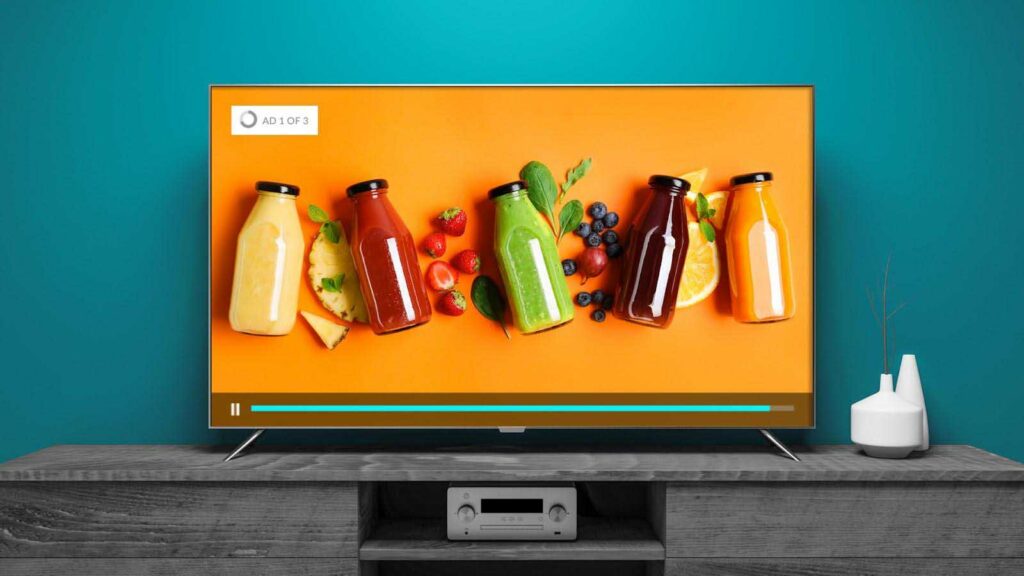Broadcast Advertising: All You Need to Know

Broadcast Advertising definition has been a traditional method of putting out commercials since the 20th century, any time in early. Ads are the audio/visual medium to describe the goods/services of a company to its vast but segmented target audiences. They tend to be as short as 15 seconds and might last up to 30 or longer.
We must understand television advertising and its language. There is only so much radio, TV, and online advertising available. Radio and television ads are significant examples of broadcast advertising.
Broadcast media, such as television and radio, reach a larger target audience than print media. General media is anchored by radio and television professionals and is meant for native or international usage.
A Quick Introduction to Broadcast Advertising
The definition of broadcast advertising has mostly stayed the same over the years, and this is what companies depend on when using it to reach their target markets and ultimately sell products or services. The format of TV advertising has evolved over the years, but its efficacy certainly hasn’t.
So basically, advertising television is an indispensable tool for businesses working to reach a large and diverse audience.
While it is an expense, many businesses find it worthwhile because it effectively grows brand loyalty, increases sales, and raises brand awareness.
Broadcast Advertising 101: Types of Broadcast Advertising

TV campaigns are where strategy meets psychology and creativity in a combination destined to appeal to viewers.
They can take the form of commercials, long-form advertising, PSAs, product placements, infomercials, and sponsored programming.
We have the broadcast media advertising:
Commercials
Of course, commercials are the foundation of TV advertising—a short video that captures viewers’ attention in around half a minute to two. In order to capture viewers’ interest, evoke emotions, and convey a relevant message quickly, advertisers have to come up with innovative ideas.
Long-Form Advertising
This is the type that would be seen in lifestyle programs and infomercials. It allows for a detailed review of the product. It educates the audience and ensures they know the product’s specificities, which builds trust and connection with them.
PSAs
While commercials focus on selling a product or service, PSAs promote awareness of and solutions to social problems. They address critical issues from racing safety, public health, and community programs.
Product placement

It is a discreet way of advertising that also efficiently brings a company’s goods or logos into TV shows. It enhances the viewer experience by using on-screen characters to interact with the advertised items and alter their customer’s purchasing behavior.
Infomercials
A larger format of 30-60 minutes, it combines entertainment and advertising. It transports the viewer to a foreign land, fills them in with all the details, and highlights all the benefits of a product.
Sponsored programming
This is a unique viewing experience that blends content with advertisers. The program or segment is sponsored by businesses that underwrite production in return for playing their commercial breaks.
Let’s Now Explore Parts of Broadcast Advertising

Elements of Advertising Copy in Broadcasting
Broadcast copy is an example of broadcast advertising. The advertising copy, or the main text in each ad, is designed to do one thing and one thing only: sell.
Well-done advertising copy drives sales, whether it’s to announce a new product or to direct traffic from landing pages with special deals or TOFU descriptions on e-commerce sites.
Broadcast Copy: The Components in Advertising
A Stated Goal
- The aim of the advertisement material should be evident right from the start. The more the copywriter knows about the aim of the copy, the better, as he has guidance with that. All advertisements will serve their purpose with the targeted pathway. Creative endeavors have a specified aim, and they show the copywriter how to unify the team and get everyone on the same page.
A Powerful Message
- So, the second element of successful advertising writing is a compelling message. In whatever form it takes, a good example here might be that you have a punchy title and then some rich textual information expanding on the title.
The heart of all advertising material is the message. It does more than simply capture the gist of what you are telling; it sticks in the minds of your audience.
Proof of Actual Benefits
- The ad delivers a solid and apparent reason for customers to want things by pinning down positive, measurable outcomes.
It helps people visualize the benefits of the good or service. Advertisers develop a powerful connection with the audience, get them willing to act, and show how these needs you want are satisfied.
An Attractive Offer

- Advertising copy must be strong and contain a powerful offer. The hook is what attracts readers and makes them curious about the offer, which is the groundwork of the writing.
- Obviously, a compelling offer is more than merely describing a product or service; it also speaks to inspiration, what truly motivates people’s decisions.
A Clear Tone
- The tone of the advertisement conveys the message and mood you wish to provoke in your audience. We must find a balance between the incentives and values of our target.
Confidence and trust. The power of presence. The professional confidently moves among business professionals, dropping confidence left, right, and center.
Yet, when you talk about popular leisure activities among Millennials, you should find a tone that resonates with their everyday life, showcases what they think of as fun and games, and maybe even something on the comedic or more accessible side.
A Clear Call to Action
- The last part of the copy – your call to action (CTA)! By turning a customer’s curiosity into commitment and guiding it in a desired direction that aligns with their objectives.
CTAs with direct and action-oriented verbs such as “grab the deal,” “act now,” or even “start your journey” provide more motive to take an immediate step.
A Means of Feedback
- Providing a short and relatable answer is basically the beginning of your company’s conversation with prospective clients. It conveys the intention to activity, be it a navigational landing page, an 800 number, or local retail premises.
This responsive link offers an easy click without all the hassle, providing customers with the experience and accessibility they seek.
Broadcast Advertising: Best Practices
Learn the ins and outs of broadcast advertising with these best practices, designed to help you increase your market effectiveness and capture your audience.
Start Small
- TV commercials are expensive, so you must be with a BETTER ONE and track how they perform well before throwing in more money. The basic idea then becomes to put up a few quick ads just to test them (I would run one or two simultaneously) and see how well they work and what works best in your first ad… you can build on it.
The Significance of Timing
- There are peak seasons in the television industry, just like in any other industry. The more people who tune in to see your ad, the more likely someone will notice your commercial.
When you are advertising, it is essential to take into consideration your landing season.
Place Quality First
- When making a commercial, pay attention to production quality. Even the most original and entertaining commercial will fall flat if a viewer expects it to sound impressive but cannot find the “volume” or epic picture quality from a television spot.
These are things that, although it may seem cheaper to start with lesser equipment and just buy higher time slots, you could invest in the shorter, high-quality commercial rather than cutting costs.
Budget-Friendly Branding
- Reaching your target audience is of the utmost importance for any marketing effort, but these peak viewing hours come with a big price tag.
They allow station staff to make innovative placement plans that stretch your cash during peak viewership and get your message in front of the people you want to see.
Last but not least, learn how to navigate broadcast advertising with confidence using best practices that include telling better stories and understanding data-driven insights.
Final Thoughts
Television Advertising and Us
We have touched base on several types of television advertising. Specifically, we observed the six major types of broadcast commercial advertising and the benefits and challenges of each. We appreciate the nuance of TV advertising, whether you go wide or take a soft touch with it.
With the proper knowledge, this high-impact crossover of creativity, technology, and audience might benefit your brand or message. There are many strategies for broadcast advertising, but the real trick is to understand and tailor one or more of them to your goals.
Frequently Asked Questions
1. The Effectiveness of Broadcast Ads
- Video results are similar to Media Science’s comparison of TV broadcast vs. streamed compared to mobile when it comes to Broadcast Advertising. Ads on the larger TV screen drive a 2.2x times increase in unaided recall and a 1.3x lift in purchase intent; ads on every other device led to an 18% lower unaided impact, for example.
2. How Broadcast Advertising Reaches a Target Audience
- A marketing strategy that employs media like radio and television to achieve identifiable target audiences using the transmission paths of air. Broadcast media advertising remains the most expensive form of reaching the largest audiences.
3. Which Approach to Marketing Strategy Does Broadcast Work Best With
- Market segmentations help create more active interactions with viewers without antagonizing them. With broadcast marketing, you work with brands to create more helpful material for raw visual needs. Broadcasting delivers on these.
